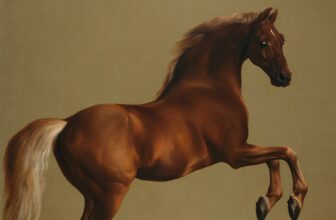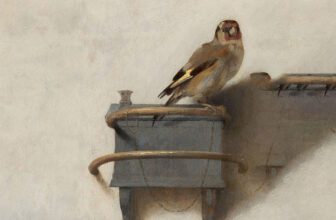
What is The Meaning of Love and Pain Painting by Edvard Munch
The Mystery of Intimacy and Suffering
This painting, often alternatively titled Vampire, is more than a mere image, it is a visceral symbolic experience. Among the evocative works of Edvard Munch, the Norwegian artist whose psychological intensity and radical vision shaped the path of modern art, Love and Pain stands out as a haunting and poetic meditation on human emotion. To look upon it is to peer into the shadowy chamber of romantic intimacy, where affection and anguish are entwined in a profound and painful embrace.
So what exactly is happening in Love and Pain? What inspired it? Why does it continue to stir interpretations a century after it was painted? To understand this enigmatic work, we must explore its background, creation, symbolism, and enduring legacy in the context of both Munch’s life and the wider scope of expressionist art.
What is Love and Pain?
Painted in 1893, Love and Pain depicts a deeply intimate yet troubling moment between a man and a woman. In the painting, the man sits with his head bowed, almost as if in submission or grief, while a red-haired woman bends over him, her arms encircling his shoulders in what could be seen as an embrace or a predatory gesture. Her flaming hair cascades over his back, enveloping him like a cloak. The emotional ambiguity of this scene has led to varying titles, originally Love and Pain, later popularly known as Vampire, each one coloring the interpretation in a different emotional shade.
The setting is dark and confined. The two figures are enveloped in shadow, their pale skin stark against the darkness, evoking the intimacy of a private moment, yet filled with a suffocating, almost claustrophobic atmosphere. The viewer is both witness and voyeur to this tableau of tenderness and torment.
The Creation and Context of Love and Pain
Edvard Munch painted Love and Pain during a pivotal period in his life and career. The early 1890s marked the beginning of his deeply personal series titled The Frieze of Life, a collection that would include some of his most famous works such as The Scream, Madonna, and Ashes. These paintings explored profound themes, love, anxiety, death, and existential dread.
Munch was deeply influenced by the Symbolist movement, which sought to express the inner workings of the mind rather than the visible world. His upbringing also left a deep scar on his psyche. His mother died of tuberculosis when he was five, and his favorite sister Sophie died of the same disease a few years later. His father’s intense religiosity and mental instability further shaped Munch’s perceptions of guilt, suffering, and mortality.
At the time of painting Love and Pain, Munch was engaged in a turbulent relationship with a woman named Dagny Juel, a writer, muse, and a symbol of liberated femininity. Their affair, filled with passion and psychological conflict, would profoundly inform the emotional undertones of the painting. While Munch never officially confirmed that Dagny was the model, many art historians suspect she inspired the red-haired figure.
Munch completed several versions of Love and Pain between 1893 and 1895, six painted versions, plus woodcuts and lithographs. Each variation reveals subtle differences, suggesting that Munch was obsessed with this motif, returning to it repeatedly as if to exorcise a memory or emotion.
What Is Happening in the Love and Pain Painting?
On the surface, the image is deceptively simple: a woman bends over a man, her mouth near his neck, in an embrace. But the emotional content is anything but straightforward.
The man appears passive, his head lowered, eyes shut. His body language suggests surrender, or possibly despair. The woman’s red hair spills across his neck and back, like blood or fire, creating a visceral visual metaphor. Her face is partially hidden, her expression unreadable, intensifying the mystery. Is she kissing him? Biting him? Comforting him?
This ambiguity has spawned diverse interpretations:
A tender moment of love and grief: Some see the woman as consoling the man, perhaps mourning alongside him. Her embrace, though intense, could be protective.
A vampiric seduction: Others view the woman as a predator, draining the man of life. The alternate title Vampire supports this darker reading, suggesting themes of erotic domination, emotional parasitism, and toxic love.
A symbolic image of emotional entrapment: The painting can also be read as an allegory for the paradox of love, that to love deeply is to suffer. The woman’s affection is so intense it becomes smothering, overwhelming.
What is most striking is how Munch denies the viewer any resolution. He does not moralize or clarify. He merely presents the psychological tension and lets it unravel in the viewer’s imagination.
Symbolism and Interpretation
Munch’s work is rich in symbolism, and Love and Pain is no exception. Every element contributes to the psychological atmosphere.
The Hair
Perhaps the most potent symbol in the painting is the woman’s hair. Rendered in vivid, almost surreal shades of red, it dominates the canvas. In art and mythology, hair often represents sensuality, seduction, and feminine power. Here, the hair is almost monstrous in its presence, wrapping, hiding, binding. It resembles a flowing river of blood or a net, reinforcing the interpretation of the woman as a vampiric figure.
The Embrace
The embrace itself is deeply ambiguous. Is it an act of love, or a gesture of control? The intertwining of bodies mirrors the complexity of human relationships, intimacy bound with vulnerability, love infused with pain.
The Color Palette
Munch employs a muted, shadowy palette, with only the hair and skin tones providing visual contrast. This dichotomy of light and dark mirrors the emotional duality of the scene, affection and fear, life and death, attraction and repulsion.
The Composition
The figures are tightly framed, suggesting entrapment. There is no escape from the emotional entanglement, no outside world visible. This inward focus heightens the psychological tension and makes the viewer feel as if they are intruding on a moment of intense personal suffering.
What Kind of Art Is Love and Pain?
Love and Pain is a quintessential example of Symbolist and Expressionist art. Munch was heavily influenced by Symbolism, a late 19th-century movement that prioritized emotional resonance over realism. Symbolist artists often explored themes of love, death, dreams, and the unconscious. For Munch, the goal was not to depict outward appearances but to “paint the soul.”
At the same time, Love and Pain contains the seeds of Expressionism, a movement that would explode in the early 20th century. Expressionists aimed to project inner turmoil onto the canvas through distorted forms and bold colors. Munch’s subjective, emotionally charged style made him a precursor to this movement.
His use of distortion, simplification, and emotional exaggeration were radical at the time and helped redefine what art could express. Munch once wrote in his diary, “I do not paint what I see, but what I saw.” Love and Pain is a vivid realization of that vision.
Reception
When Love and Pain was first exhibited, it provoked controversy and discomfort. Critics in conservative circles were scandalized by the overtly emotional and potentially erotic content. The title Vampire, coined by an art critic who interpreted the woman as a blood-sucking predator, both heightened the scandal and contributed to the painting’s mythos.
Despite, or perhaps because of, its disturbing power, Love and Pain quickly became one of Munch’s most iconic images. It taps into a universal human experience: the deep connection between love and vulnerability, between intimacy and suffering.
Munch himself seemed to have a tortured relationship with women. He once remarked, “Women are either angels or vampires.” This duality is vividly enacted in Love and Pain. The woman in the painting is neither wholly nurturing nor fully destructive, she is both. This ambiguity makes the work timeless and continually relevant.
The image has inspired other artists, writers, and psychologists, notably Sigmund Freud and Carl Jung, who saw in Munch’s paintings a mirror of the subconscious mind.
Where Is Love and Pain Painting Today?
Several versions of Love and Pain exist, including paintings, lithographs, and woodcuts. The most famous painted version, perhaps the one most commonly reproduced in textbooks and exhibitions, belongs to the Munch Museum (Munchmuseet) in Oslo, Norway, where it remains a centerpiece of the artist’s legacy.
Other versions are housed in private collections and museums, including the Metropolitan Museum of Art in New York and the Gothenburg Museum of Art in Sweden. These variations offer subtle shifts in tone and execution, each providing a slightly different lens into Munch’s psyche.
The Munch Museum, which reopened in a spectacular new building in 2021, dedicates a significant portion of its space to The Frieze of Life series, of which Love and Pain is an essential component. Visitors to the museum can trace Munch’s emotional evolution and understand how deeply personal his work truly was.
The Eternal Dance of Love and Suffering
Love and Pain by Edvard Munch is not a painting that offers comfort. It does not resolve its own contradictions or soothe the viewer with neat emotional answers. Instead, it plunges us into the core of what it means to love and suffer, often, heartbreakingly, at the same time.
Munch once wrote, “From my rotting body, flowers shall grow and I am in them and that is eternity.” This quote resonates with the legacy of Love and Pain. The painting is a flower grown from the rotting body of past trauma, blooming in the form of art. It remains eternal not because it is beautiful in a conventional sense, but because it tells the truth of our most vulnerable moments.
More than a century later, Love and Pain continues to resonate. In its tangled embrace of passion and despair, it holds up a mirror to the complexity of human emotion. As viewers, we are drawn not just into the scene, but into ourselves.




